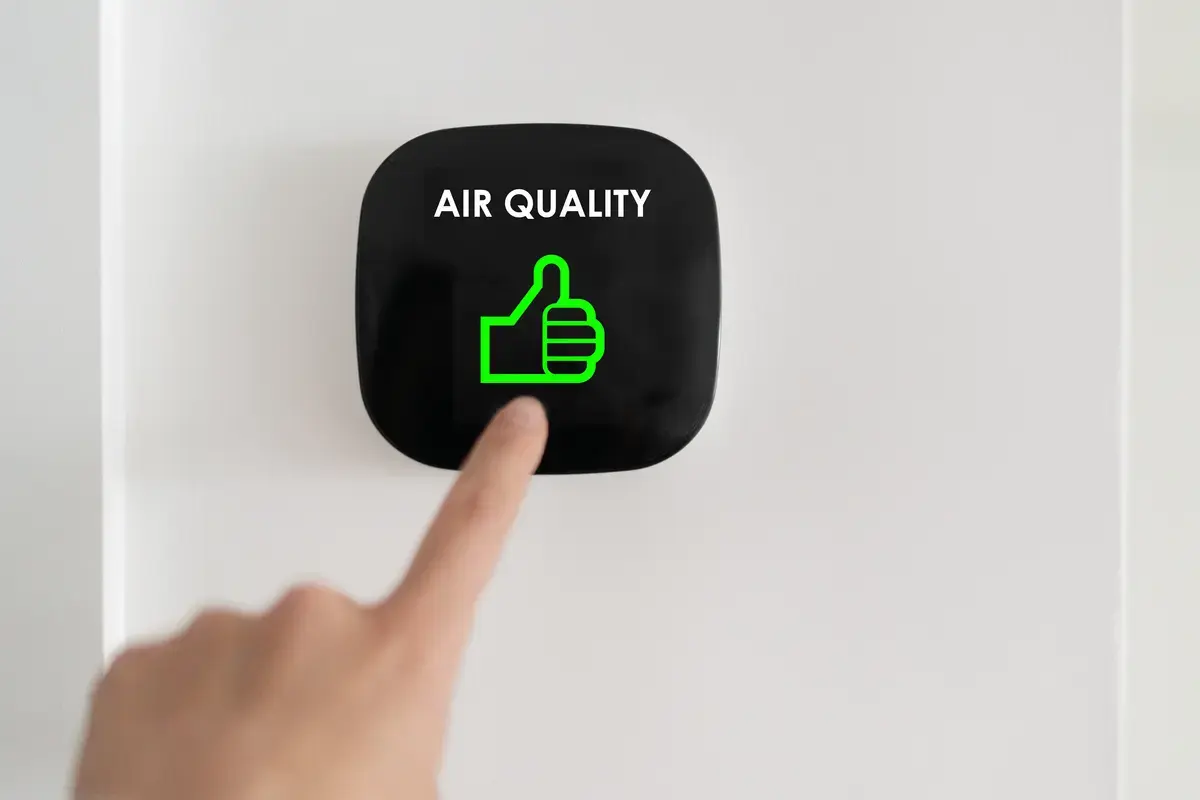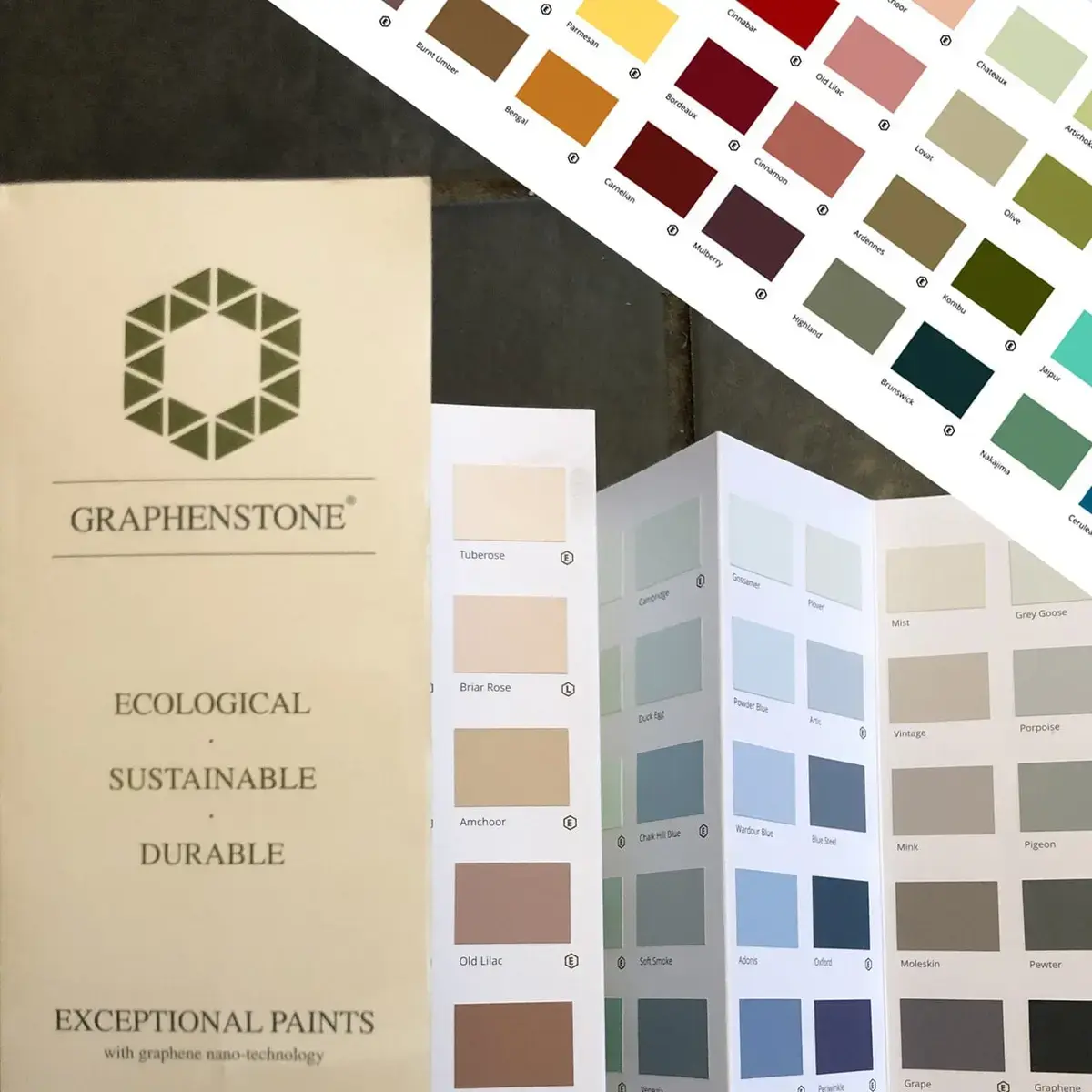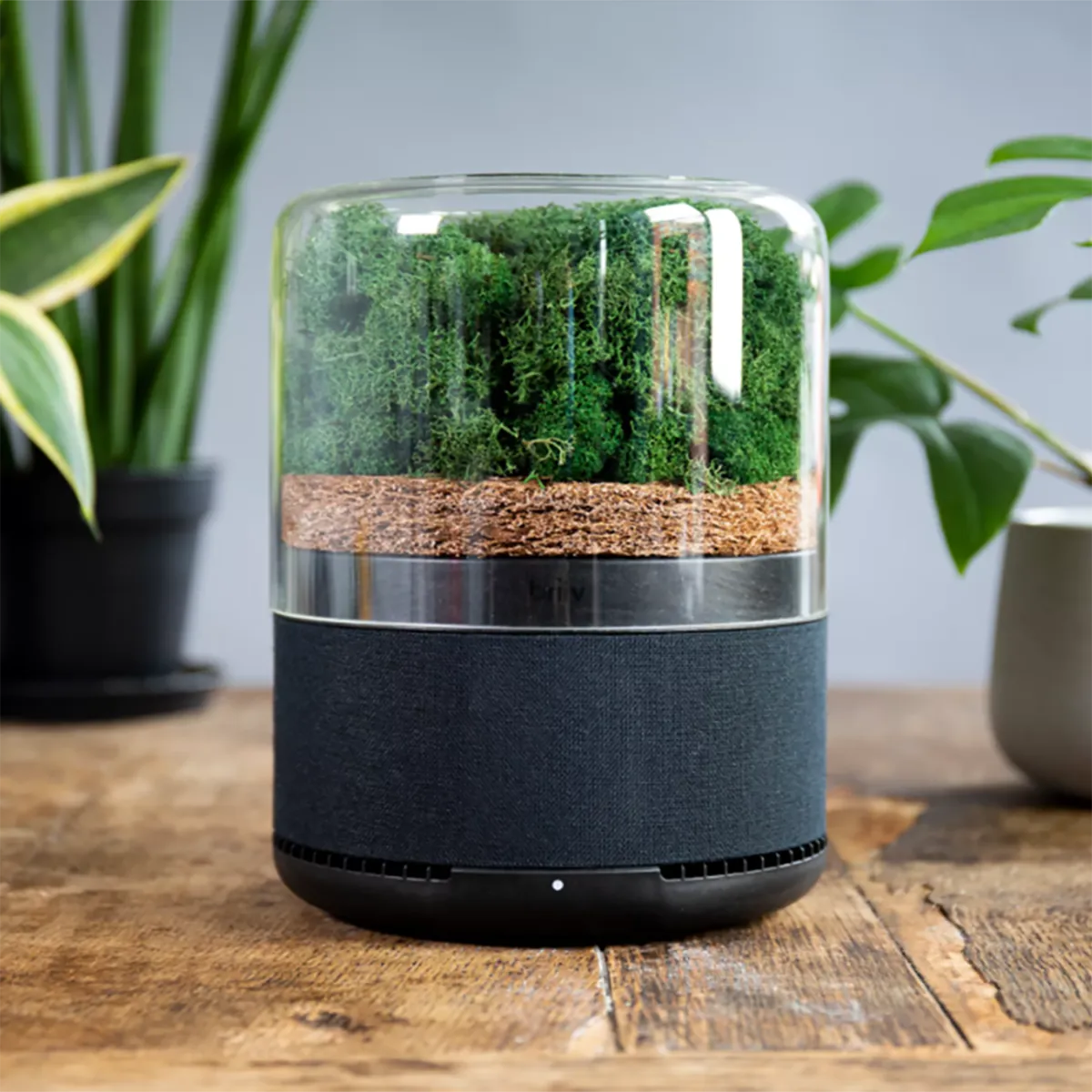- Log in to post comments

The Role of Low VOC Materials in Your Home
The Role of Low VOC Materials in Your Home
Renovating your home offers not only a chance to refresh your living space but also an opportunity to make choices that promote a healthier indoor environment. The importance of indoor air quality cannot be overstated, as we spend approximately 90% of our time indoors—a statistic that has risen with the increase in remote working since the COVID-19 pandemic. The materials and products used in renovations can significantly impact indoor air quality, either positively or negatively. This article explores the importance of selecting Low VOC (Volatile Organic Compounds) materials, which play a crucial role in maintaining and enhancing indoor air quality. By choosing these materials, you can ensure that your renovation contributes to a healthier, more comfortable living space while also supporting environmental sustainability.
What are VOCs and Why Do They Matter?
What are VOCs and Why Do They Matter?
Volatile Organic Compounds (VOCs) are chemicals that are released into the air from various products and materials commonly used in homes. These include paints, varnishes, adhesives, sealants, and even certain types of furniture. VOCs are particularly concerning because they can persist in the air for long periods, contributing to indoor air pollution. The health impacts of VOCs are well-documented, with symptoms ranging from mild irritation to serious respiratory problems and long-term health issues. Common VOCs found in homes include formaldehyde, benzene, toluene, and xylene, each of which can have adverse effects on human health.
The off-gassing of VOCs occurs when products release these chemicals into the air, often continuing for weeks, months, or even years after the product has been installed. This continuous release of pollutants can be particularly harmful in poorly ventilated spaces, leading to a buildup of toxic substances in the indoor environment. Children, the elderly, and individuals with respiratory conditions are especially vulnerable to the effects of VOCs, making it crucial to select low or zero VOC materials during renovations. By doing so, you can significantly reduce the presence of these harmful compounds in your home.
Low-VOC Furniture: Not All Materials Are Equal
Low-VOC Furniture: Not All Materials Are Equal
Furniture made from composite wood products like MDF (Medium-Density Fibreboard), particleboard or plywood is a source of VOCs in your home, particularly when made using traditional adhesives that contain formaldehyde. These materials can emit VOCs over time, which will affect indoor air quality. However, not all MDF, particleboard or plywood products are created equal.
There are eco-friendly options available that significantly reduce or eliminate VOC emissions. For instance, you can look for MDF or particleboard that is labelled as No-Added Formaldehyde (NAF) or Ultra-Low Emitting Formaldehyde (ULEF), indicating that the products are made with safer adhesives and meet stringent environmental standards. Similarly, when selecting plywood, opting for varieties that use low-VOC or formaldehyde-free adhesives can also help minimise indoor air pollution.
To minimise the impact of VOCs from furniture, you can also consider choosing pieces made from solid wood, which typically have lower VOC emissions. Additionally, look for furniture labelled as low-VOC or VOC-free. These products are manufactured with safer materials and finishes, reducing the potential for indoor air pollution. If you’re purchasing new furniture, allow it to air out in a well-ventilated space before bringing it into your home; or you could even consider buying ex-display items. This practice helps to reduce the initial off-gassing, ensuring that fewer VOCs are released into your living environment.
Fresh Coat, Fresh Air: Choosing Your Paint
Fresh Coat, Fresh Air: Choosing Your Paint
Paint is one of the most significant contributors to indoor VOC levels, particularly during and after application. Traditional paints contain a variety of chemicals that can release VOCs into the air, sometimes for years after the paint has dried. This is especially concerning in new builds or extensive renovations, where large quantities of paint are used.
To improve indoor air quality, consider using natural paints made from ingredients like chalk, clay, plant dyes, and water. These paints are free from harmful chemicals and additives, making them an excellent choice for those looking to minimise their environmental impact while ensuring a healthier home. Natural paints not only reduce VOC emissions, but also offer unique aesthetic qualities, with a range of textures and finishes that can add character to your living space.
If natural paint is not available or suitable for your project, zero VOC paints are a good alternative. These paints contain minimal VOCs (typically 5 grams/litre or less) and are designed to be as environmentally friendly as possible. However, it’s essential to read the labels carefully, as some zero VOC paints may still contain other chemicals, such as biocides and solvents that can impact indoor air quality. For example, even low VOC paints may include additives that enhance performance but compromise air quality. Therefore, always verify the product's full ingredient list before making your purchase.

Graphenstone Paints are an excellent example of innovative products that go beyond just being low VOC. These paints not only reduce VOC emissions but also feature technology that absorbs CO2, further improving indoor air quality and supporting sustainability. Such advancements in paint technology demonstrate the growing trend toward products that contribute to both a healthier home and a healthier planet.
Ecological Paints by Graphenstone

Edward Bulmer Natural Paint focuses on sustainability, producing bio-based paints using pure, natural ingredients from plants and minerals. Unlike standard paints, their products are fully transparent, listing all ingredients to ensure no greenwashing. The manufacturing process is carbon-neutral and leftover paint can be composted, offering a truly eco-friendly alternative to conventional paints which often cannot be disposed of in this way.
Natural Paints by Edward Bulmer
Tackling VOCs in Adhesives
Tackling VOCs in Adhesives
Adhesives and sealants are commonly used in renovations, but many traditional products contain high levels of VOCs, and this is oftern overlooked. These products can off-gas for extended periods, contributing to indoor air pollution long after the renovation is complete. To mitigate this, choosing low VOC adhesives and sealants is a practical step toward maintaining good indoor air quality.
For instance, Bostik Green Sealant offers excellent sealing performance with minimal VOC emissions, making it an ideal choice for areas like kitchens and bathrooms where air quality is paramount. Weber Eco-Friendly Adhesive combines strong bonding capabilities with low VOC content, making it suitable for tiling, flooring, and other renovation projects. Another reliable option is SikaBond® Construction Adhesive, which provides robust bonding for various materials while maintaining low VOC levels. Eco-Bond Adhesive is a non-toxic, environmentally friendly choice that can be used in both interior and exterior applications. MAPEI Ultrabond ECO adhesives are specifically designed for low VOC emissions, making them perfect for flooring installations.
When selecting adhesives and sealants, it’s crucial to look for certifications like GREENGUARD or LEED. These certifications indicate that the products meet stringent standards for low VOC emissions, ensuring they contribute to a healthier indoor environment. By using these certified products, you can significantly reduce the impact of your renovation on indoor air quality.
Think You’re Cleaning? You Might Be Polluting
Think You’re Cleaning? You Might Be Polluting
Cleaning products are essential for maintaining a healthy home, but many traditional products can harm indoor air quality. This is because they often contain VOCs, which can easily evaporate into the air and contribute to indoor pollution. Common VOC sources in cleaning products include ammonia, bleach, certain solvents, and synthetic fragrances. These chemicals can release fumes, leading to respiratory issues, headaches, and other health problems.
To protect your indoor air quality, it’s important to choose cleaning products that are low in VOCs. Method All-Purpose Cleaner is a popular option, known for its naturally derived, biodegradable ingredients that clean effectively without releasing harmful chemicals into the air. Similarly, Ecover Multi-Surface Cleaner is free from VOCs and uses plant-based ingredients to keep your home clean while maintaining good air quality.
You can easily create your own cleaning products with simple, everyday ingredients. For instance, a mixture of white vinegar and water makes an excellent all-purpose cleaner, cutting through grease and grime without emitting harmful VOCs. To add a pleasant scent without the chemicals, try adding a few drops of pure essential oils like lemon.
Using low VOC cleaning products not only reduces indoor air pollution but also helps create a safer, more comfortable living environment. By choosing these products, you can maintain cleanliness without compromising the health of your indoor air.
Indoor Plants: Natural Air Purifiers
Indoor Plants: Natural Air Purifiers
Indoor plants are not only aesthetically pleasing but also serve as natural air purifiers. Many plants are highly effective at filtering out harmful VOCs, making them an excellent addition to any home focused on improving air quality. For example, the Spider Plant is known for its ability to remove formaldehyde, xylene, and toluene, and it thrives in various environments with minimal care. Peace Lilies are particularly effective at absorbing benzene, formaldehyde, trichloroethylene, and ammonia, making them a top choice for air purification.
Boston Ferns and Areca Palms are also great for removing formaldehyde and maintaining indoor humidity, which can help prevent the build-up of dust and allergens. The Rubber Plant is another excellent option, particularly for eliminating formaldehyde.
For those seeking low-maintenance options, consider innovative solutions like picture plants from living-wall specialists. These products incorporate living plants into wall art, providing both aesthetic and environmental benefits with minimal upkeep. Air purifiers that utilise plant-based technology are also becoming increasingly popular, offering a modern approach to natural air purification.

LivePicture GO by Mobilane is a great solution for low-maintenance greenery
Proper Ventilation: Essential for Healthy Indoor Air
Proper Ventilation: Essential for Healthy Indoor Air
Proper ventilation is crucial for reducing indoor VOC concentrations and maintaining a healthy indoor environment. One of the most effective ways to improve air circulation is by regularly opening doors and windows to allow fresh air to enter and stale air to exit. This simple practice can significantly dilute VOC levels in your home, leading to a fresher and healthier living space.
Maintaining lower temperatures and humidity levels is also important, as higher heat and moisture can increase the off-gassing of chemicals from building materials, furniture, and household products. Heat Recovery Ventilation (HRV) systems are particularly beneficial in this regard. These systems continuously exchange stale indoor air with fresh outdoor air, helping to regulate temperature and humidity while reducing VOC concentrations. HRV systems are especially valuable in tightly sealed, energy-efficient buildings, where natural ventilation may be limited.
In addition to regular ventilation, try to schedule home renovations during times of the year when you can keep doors and windows open. This allows for better air circulation and helps to minimize the buildup of VOCs and other pollutants during the renovation process. By incorporating these ventilation practices, you can significantly reduce the presence of harmful chemicals in your home, ensuring that your living environment remains comfortable and healthy long after the renovation is complete.
In Summary...
In Summary...
Selecting Low VOC materials and implementing strategies to improve indoor air quality are essential steps in creating a healthier, more sustainable home. Renovations offer a unique opportunity to make choices that positively impact the environment and your well-being. By opting for low VOC paints, adhesives, and sealants, choosing furniture made from solid wood or low-VOC materials, and using green cleaning products, you can dramatically reduce the levels of harmful chemicals in your home.
Incorporating indoor plants as natural air purifiers and ensuring proper ventilation further enhance air quality, making your living space not only more comfortable but also safer for you and your family. As you plan your next renovation project, consider the long-term benefits of low VOC materials and environmentally friendly practices. These choices will not only support a healthier lifestyle but also contribute to a more sustainable future. By prioritising indoor air quality, you create a home that is not just beautiful but also a sanctuary of health and well-being.



